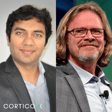
The One to One (near) Future, with Don Peppers
You don’t need a management consultant to tell you that customer experience is important in 2024. It was not always the case. In fact, before the CRM revolution of the early 90’s, experience was a word seldom heard in boardrooms.
In this very special episode, host Will Kingston is joined by the man who is widely credited with launching that revolution, Don Peppers. Don’s first book, ‘The One to One Future’, co-authored with his long-time collaborator, Martha Rogers, put customer relationship management on the map. Inc. Magazine's editor-in-chief called it "one of the two or three most important business books ever written."
He has since authored or co-authored a legacy of international business best-sellers that have collectively sold over a million copies in 18 languages. Research by SatMetrix in 2015 ranked Don and Martha as the world’s #1 "most authoritative experts on customer experience."
Get in touch with Acquis Cortico-X here.
Follow Acquis Cortico-X on LinkedIn here.



















